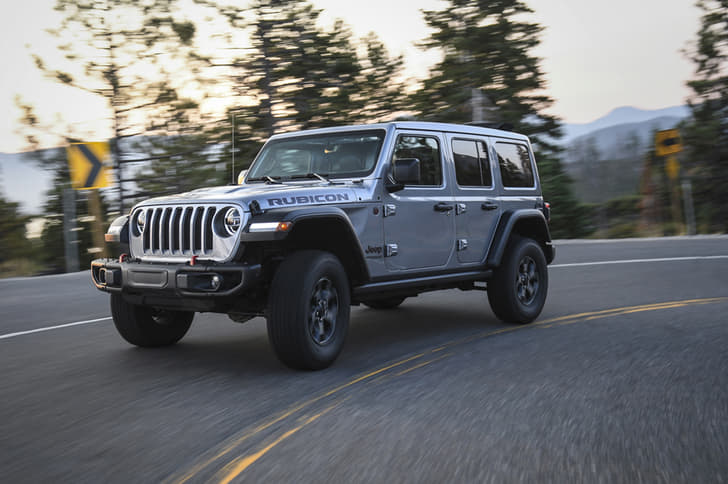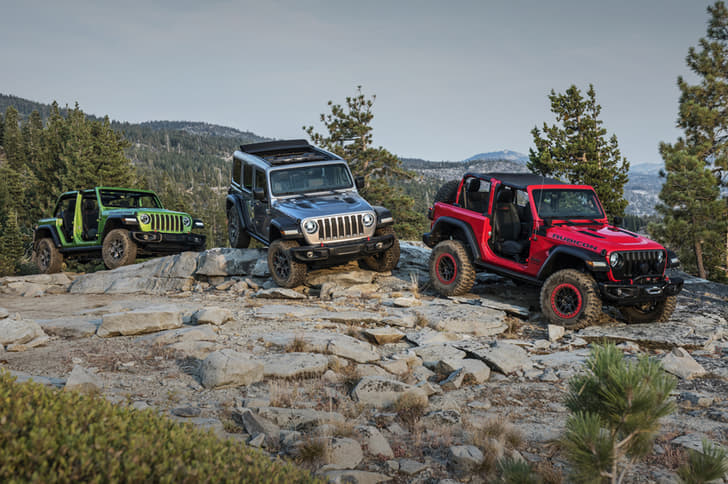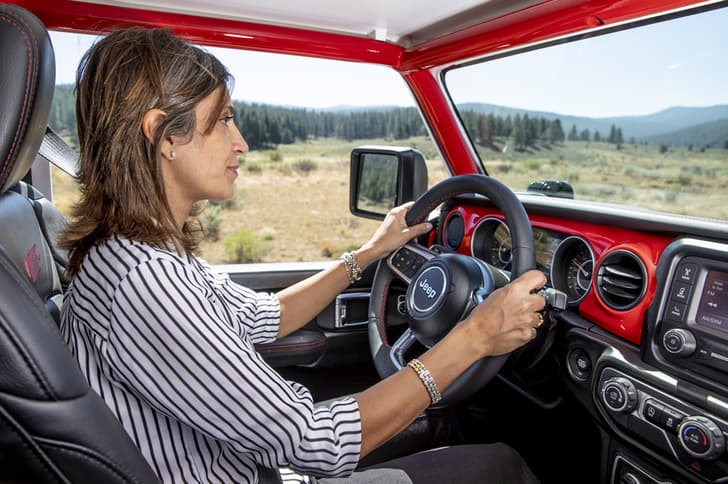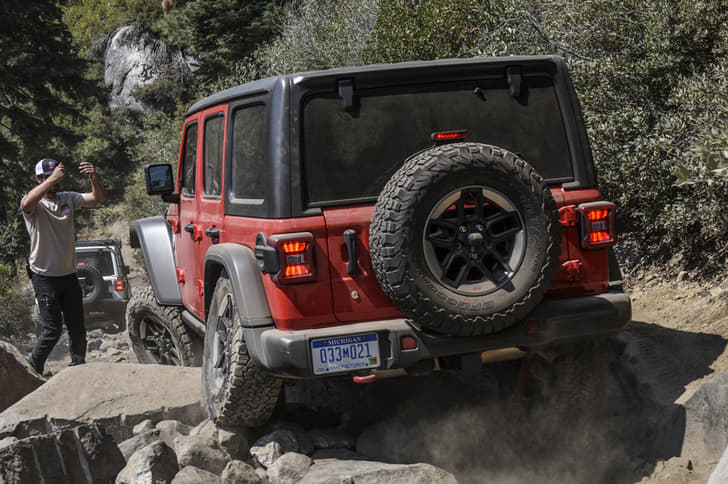While most carmakers and designers work hard to make revolutionary changes to the styling when it comes to an all-new model, Jeep is one brand that really hasn’t made radical design changes to its models over the years.
I can see that as I exit the lobby of the hotel at Lake Tahoe, which has a US Army MB jeep in the driveway, parked alongside the spanking new 2018 Jeep Wrangler. 70 years separate the two, but they still look so alike. The lineage is clear to see: the squared-off nose, the upright windscreen, the round headlamps, trapezoidal arches and, of course, the trademark seven-slot grille are all there still. This brand hasn’t changed, because it didn’t need to. The Wrangler’s iconic shape has stood the test of time and is still much appreciated today.

The 2018 Wrangler carries the heritage forward, but has been tweaked so it can keep up with the times and regulations. The slotted grille that has its roots in the CJ now gently curves halfway up, and the windscreen is also a bit more raked, all in the interest of improving aerodynamics, which will result in better efficiency. Interestingly, Jeep engineers tell us they were worried about the windscreen being far too raked for improved aero, which would take away from the Jeep character, but luckily, they were able to achieve an optimal point. The signature round headlights as well as tail-lights are now LED units on the Rubicon variant we're driving, and there’s also a DRL halo around the headlights.
The windshield gets a four-bolt design to allow for the roof to be folded down more easily, and a new header bar remains in place when the roof is folded, allowing the rear-view mirror to remain in place. Lighter panels and redesigned latches also allow for much easier removal of both the hard- and the soft-top.
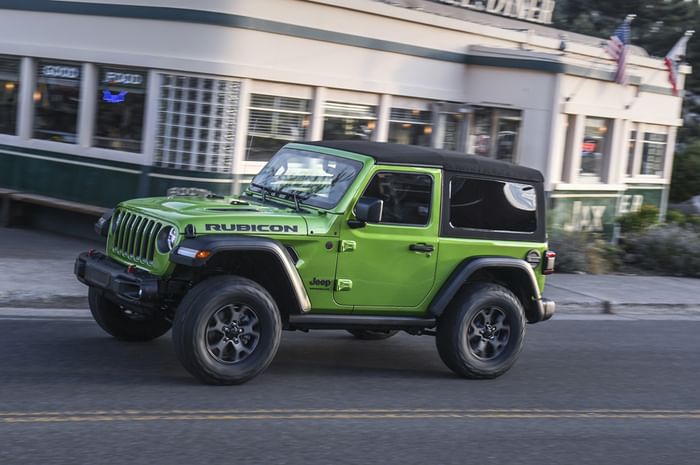
On the inside, the Wrangler sticks with the horizontal dash layout, but adds a lot of modern features such as a 7.0- or 8.4-inch touchscreen infotainment system (depending on the variant), an engine start button, TFT display for the dials and a host of USB ports and 12V charging sockets.
The notable difference with the new Wrangler, though, is the additional space for rear seat passengers. The four-door hard-top variant that’ll come to India has a wheelbase that is longer by 60mm, and it feels a whole lot more spacious on the inside. Rear seat leg-room is substantially improved, and the seats themselves are more comfortable.
Static inspection complete, we head out for the Rubicon trail. Yes, our drive of the new Wrangler is at what is easily one of the world’s most iconic off-road destinations; the ideal playground, then, for the new Wrangler.
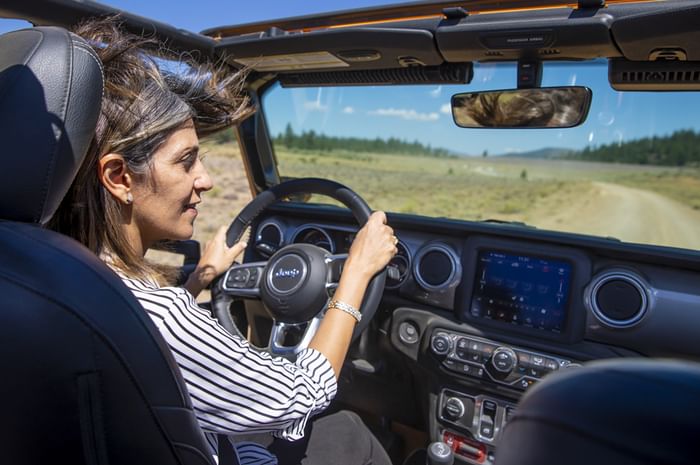
The drive to the trail includes a good stretch of tarmac, and the new 2.0-litre turbocharged petrol engine surprises me with the way it breathes so easily and propels the Wrangler so effortlessly, with the eight-speed automatic shifting efficiently and smoothly. The new Wrangler is also lighter by about 90kg, and so, this engine feels powerful enough on-road. The true test for this turbo-petrol engine, however, will be during off-road crawling, but more on that in a bit. On the road, the Wrangler feels improved, ironing out road imperfections with the ride staying supple. It also feels more sure-footed through corners, with less body roll. Though the steering has improved, it still doesn’t exactly bristle with feel and still has a bit of slack at dead-centre.
However, once we leave the asphalt and drive onto the trail, the Wrangler’s character changes and it suddenly comes alive. The Rubicon trail is epic to say the least. It’s a 19 kilometre stretch that took us pretty much the entire day to negotiate, which should give you an idea of just how challenging it is. Thankfully, though, Jeep Jamboree guides were on hand as spotters, leading us expertly through the trail.
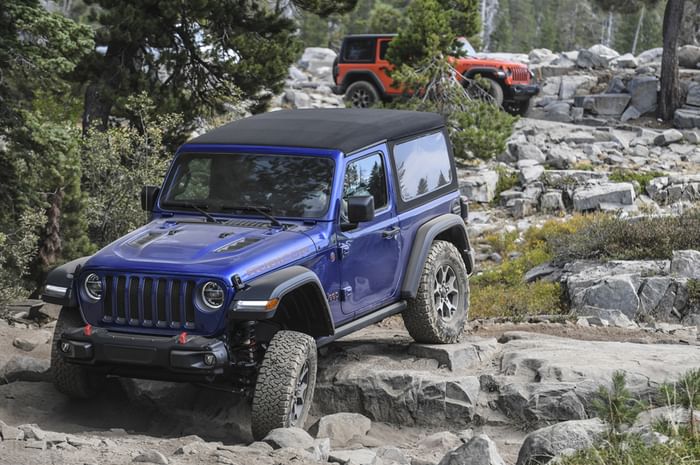
There were dozens of times I thought it was near-impossible to get through the next section, but the Wrangler felt right at home. With more ground clearance and better break-over and departure angles, the Wrangler can do even more than it could before. A wider track, improved track bars and lower arms provide more stability.
But more than its hardcore technical capabilities, what’s amazing is despite feeling so big on the inside, it squeezes through some incredibly tight spaces. The 10.51m turning circle is quite astounding for an SUV of its size and manoeuvring it through the demanding off-road trail was a breeze.
The turbocharged engine, however, requires a little getting used to. Modulating throttle inputs when rock-crawling, you need to judge where the turbo kicks in, but once you get the hang of it, it’s smooth sailing there onwards. If there was ever a worry about how turbo lag would affect off-road situations, the new Wrangler dispels it for good. The crawl ratio has been tweaked, and the 8 speeds ensure you can nudge the Wrangler over the edges of boulders or over craters that are larger-than-life. We were instructed to disconnect the sway bars, which is easily done at the press of a button. This allows for the masses of articulation needed to conquer this jaw-dropping terrain. The way the Wrangler clambers over boulders, crawling forward like a giant tarantula stretching and flexing its limbs, is impressive. A humongous 200mm of wheel travel ensures that you just don’t feel the terrain below the Wrangler’s wheels. Even when you’re negotiating a steep drop, it just gently steps down and carries on. The nature of the terrain is so demanding, by this time, I should have been tossed around a bit in the cabin, but that isn’t the case, and I think that says a lot about the new Wrangler.
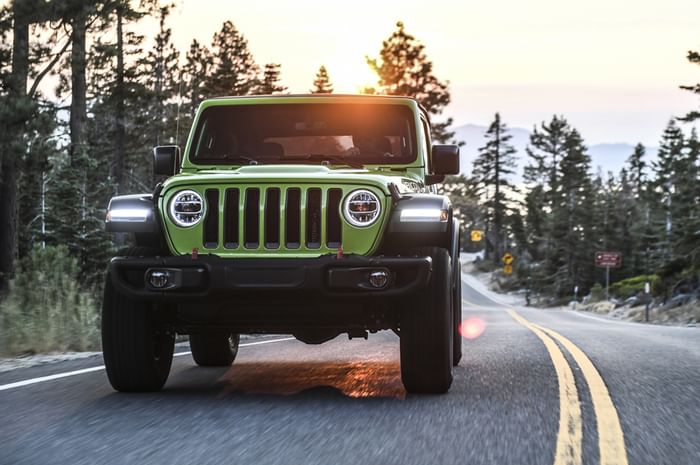
Still, the trail is so treacherous that in some parts, the skid plates and side steps (or stone rails, as the Jeepers call them) take a beating, and the clangs and bangs momentarily make me think I have broken something. But the Wrangler Rubicon is as tough as the trail it shares its name with, and nothing – and I mean nothing – bothers it.
Some sections require us to lock the differentials and again, that’s easily done by just flipping a switch on the dash. We clamber up steep, slippery inclines, make our way down some crazy descents, tackle boulders, make our way upward over clear rock and conquer terrain that just looks impossible to conquer when viewed from the outside. There is no road here, but the Wrangler makes its own way and soon enough, we reach camp.
The location is outstanding, and I’m blown away by the view and the Wrangler’s capabilities. Of course, the new Wrangler is clearly better in what it can do off the road, but even more impressive are its improved on-road manners, which make it far easier to live with on a day-to-day basis. That’s a positive, especially considering most people in India will be tackling the urban crawl in it more often than the rock crawl. The only buzz-kill is that Jeep will only ever manufacture the Wrangler in the USA, so without local assembly, it will continue to be an expensive car to buy.

